History
In 1790, during the French Revolution, Albert Louis de Pouilly (1731–1795) emigrated with his family. His sons Albert and Emmanuel changed the family name to Mensdorff-Pouilly, named for a place in the county of Roussy in Luxembourg.
In 1818, Emmanuel von Mensdorff-Pouilly received a comital title from the Austrian Emperor, and he was recognized as noble in Bohemia (the Inkolat ) in 1839. The family motto is Fortitudine et caritate. The Mensdorff-Pouilly family succeeded the extinct House of Dietrichstein, one of Europe’s most distinguished noble families.
Through Princess Sophie of Saxe-Coburg-Saalfeld, wife of Emmanuel von Mensdorff-Pouilly, the family is closely related to the royal families of Belgium, Sweden, Portugal and the United Kingdom.

Countess Augusta Caroline Sophie Reuss-Ebersdorf, was by marriage the Duchess of Saxe-Coburg-Saalfeld. She was born in Saalburg-Ebersdorf. She was the maternal grandmother of Queen Victoria and the paternal grandmother of Albert, Prince Consort.
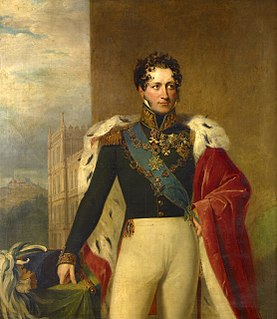
Ernest I was the last sovereign duke of Saxe-Coburg-Saalfeld and, from 1826, the first sovereign duke of Saxe-Coburg and Gotha. He was the father of Albert, Prince Consort, who was the husband of Queen Victoria. Ernest fought against Napoleon Bonaparte, and through construction projects and the establishment of a court theatre, he left a strong imprint on his residence town, Coburg.
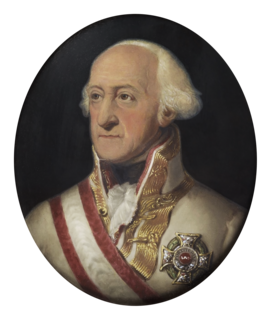
Prince Frederick Josias of Saxe-Coburg-Saalfeld was a general in the Austrian service.
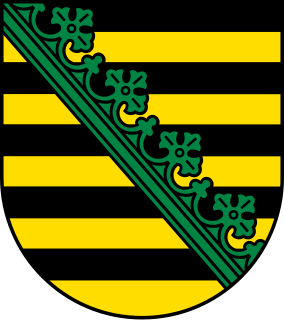
The House of Wettin is a dynasty of German counts, dukes, prince-electors and kings that once ruled territories in the present-day German states of Saxony, Saxony-Anhalt and Thuringia. The dynasty is one of the oldest in Europe, and its origins can be traced back to the town of Wettin, Saxony-Anhalt. The Wettins gradually rose to power within the Holy Roman Empire. Members of the family became the rulers of several medieval states, starting with the Saxon Eastern March in 1030. Other states they gained were Meissen in 1089, Thuringia in 1263, and Saxony in 1423. These areas cover large parts of Central Germany as a cultural area of Germany.

DomFerdinand II was a German prince of the House of Saxe-Coburg and Gotha-Koháry, and King of Portugal jure uxoris as the husband of Queen Maria II, from the birth of their first son in 1837 to her death in 1853.
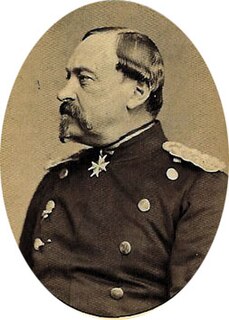
Ernest II was the sovereign duke of the Duchy of Saxe-Coburg and Gotha from 29 January 1844 to his death. He was born in Coburg; his father Ernest III, Duke of Saxe-Coburg-Saalfeld, became Duke Ernest I of Saxe-Coburg and Gotha in 1826 through an exchange of territories.

Coburg is a town located on the Itz river in the Upper Franconia region of Bavaria, Germany. Long part of one of the Thuringian states of the Wettin line, it joined Bavaria by popular vote only in 1920. Until the revolution of 1918, it was one of the capitals of the Duchy of Saxe-Coburg and Gotha and the Duchy of Saxe-Coburg-Saalfeld. Through successful dynastic policies, the ruling princely family married into several of the royal families of Europe, most notably in the person of Prince Albert, who married Queen Victoria in 1840. As a result of these close links with the royal houses of Europe in the late 19th and early 20th centuries, Coburg was frequently visited by the crowned heads of Europe and their families.

The House of Saxe-Coburg and Gotha is a German dynasty that ruled Saxe-Coburg and Gotha, one of the Ernestine duchies.

Princess Victoria of Saxe-Coburg and Gotha was the daughter of Prince Ferdinand of Saxe-Coburg and Gotha and Princess Maria Antonia Koháry. Her father was the second son of Francis, Duke of Saxe-Coburg-Saalfeld and Countess Augusta Reuss of Ebersdorf.

Princess Charlotte Sophie of Saxe-Coburg-Saalfeld, Duchess in Saxony was a German duchess.
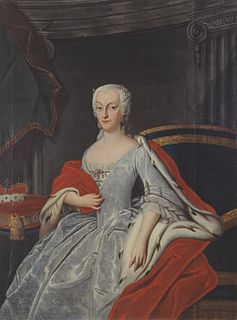
Princess Anna Sophie of Schwarzburg-Rudolstadt was a Princess of Schwarzburg-Rudolstadt.

Francis, Duke of Saxe-Coburg-Saalfeld, was one of the ruling Thuringian dukes of the House of Wettin. As progenitor of a line of Coburg princes who, in the 19th and 20th centuries, ascended the thrones of several European realms, he is a patrilineal ancestor of, among others, Queen Elizabeth II of the United Kingdom, King Philippe of Belgium and King Simeon II of Bulgaria.

Prince Ferdinand of Saxe-Coburg and Gotha was a German prince of the House of Saxe-Coburg and Gotha and a general of cavalry in the Austrian Imperial and Royal Army during the Napoleonic Wars. Despite remaining a Lutheran, by marriage he established the Catholic branch of the family, which eventually gained the thrones of Portugal (1837) and Bulgaria (1887).
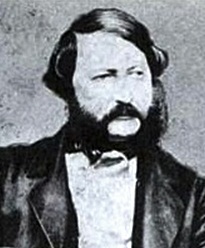
August Victor Louis of Saxe-Coburg and Gotha, was a German prince of the Catholic House of Saxe-Coburg and Gotha-Koháry. He was a General Major in the army of Saxony and the owner of Čábráď and Štiavnica, both in modern-day Slovakia.

Prince Leopold Franz Julius of Saxe-Coburg and Gotha was a German prince of the House of Saxe-Coburg and Gotha-Koháry.

Count Alexander Konstantin Albrecht von Mensdorff-Pouilly, 1st Prince von Dietrichstein zu Nikolsburg was an Austrian general, diplomat and politician, including two years as Minister of Foreign Affairs (1864–66) and one month's service as Minister-President of Austria. He was a first cousin of Queen Victoria of the United Kingdom of Great Britain and Ireland, as their mothers were sisters.

Count Albert Viktor Julius Joseph Michael von Mensdorff-Pouilly-Dietrichstein was an Austro-Hungarian diplomat who served as Ambassador to London at the outbreak of World War I.

Emmanuel Graf von Mensdorff-Pouilly was an army officer in the Imperial-Royal Army of the Austrian Empire, and vice-governor of Mainz. He was the uncle of Queen Victoria and the godfather of her husband, Prince Albert of Saxe-Coburg and Gotha.

Dietrichstein was the name of one of the most prominent Austrian noble families originating from Carinthia. The family belonged to heHigh Nobility, the HochAdel. The Nikolsburg (Mikulov) branch was elevated to Princes of the Holy Roman Empire in 1624, while a member of the Hollenburg branch was elevated to the same dignity in 1684.

Princess Sophie Friederike Karoline Luise of Saxe-Coburg-Saalfeld was a princess of Saxe-Coburg-Saalfeld, and the sister of Princess Victoria of Saxe-Coburg-Saalfeld and King Leopold I of Belgium, and aunt of Queen Victoria. By marriage, she was a Countess of Mensdorff-Pouilly.

























